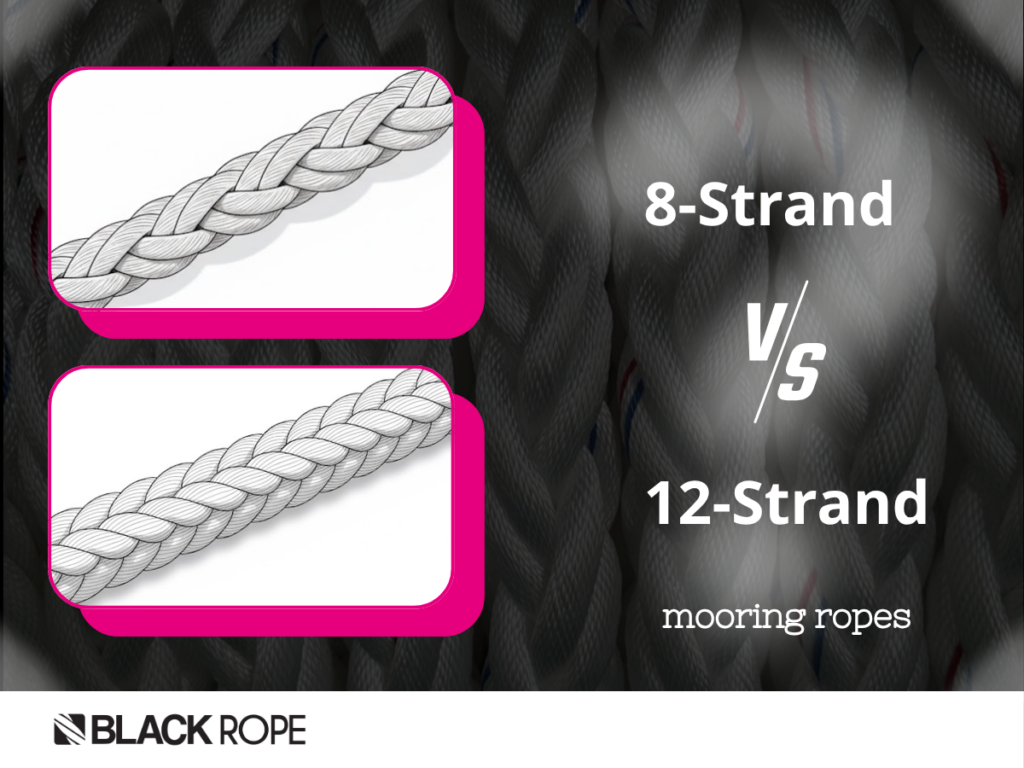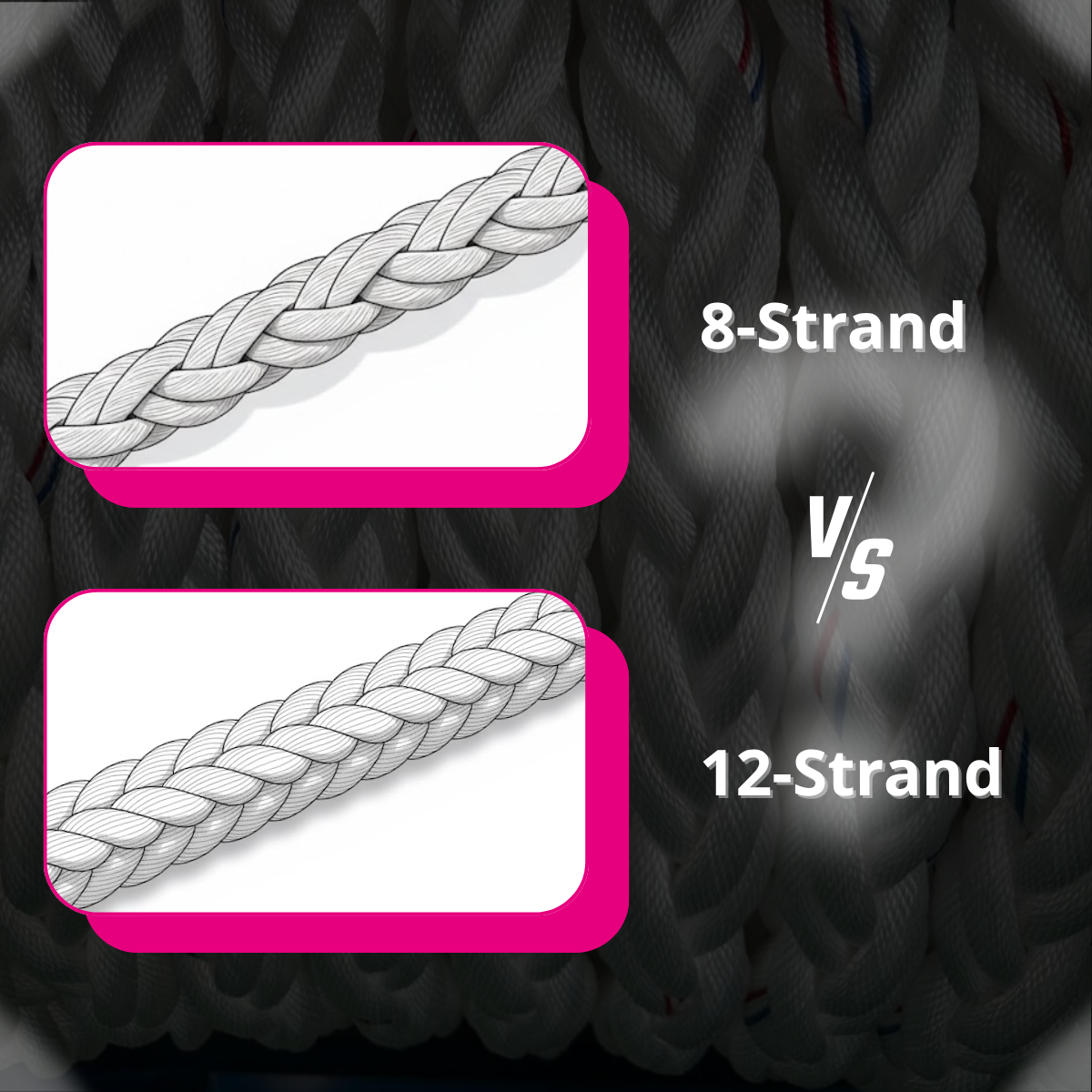
8-Strand vs 12-Strand
When selecting synthetic mooring ropes of the same material, the construction style significantly impacts their performance, handling and durability. Two common and highly effective single braid constructions are the 8-strand and the 12-strand.
While both are designed to be torque-free and resist kinking, their distinct braiding patterns offer different advantages. This comparison will outline the key pros and cons of each type when compared to one another.
8-Strand Construction
✔️ PROS
- Superior Grip & Flexibility
- Easier Splicing
➖ CONS
- Slightly Lower Strength Efficiency
- Less Compact
12-Strand Construction
✔️ PROS
- Higher Strength Efficiency
- Superior Abrasion Resistance
- Maintains Round Shape
➖ CONS
- Less Grip on Winches
- More Intricate Splicing
Summary of Differences
The choice between 8-strand and 12-strand construction for a synthetic mooring rope of the same material, typically comes down to a “trade-off”:
- 8-strand for easier handling and splicing, which is often preferred for general mooring operations.
- 12-strand for maximum strength and durability per size, which is preferred for high-performance applications like extended mooring setups.

